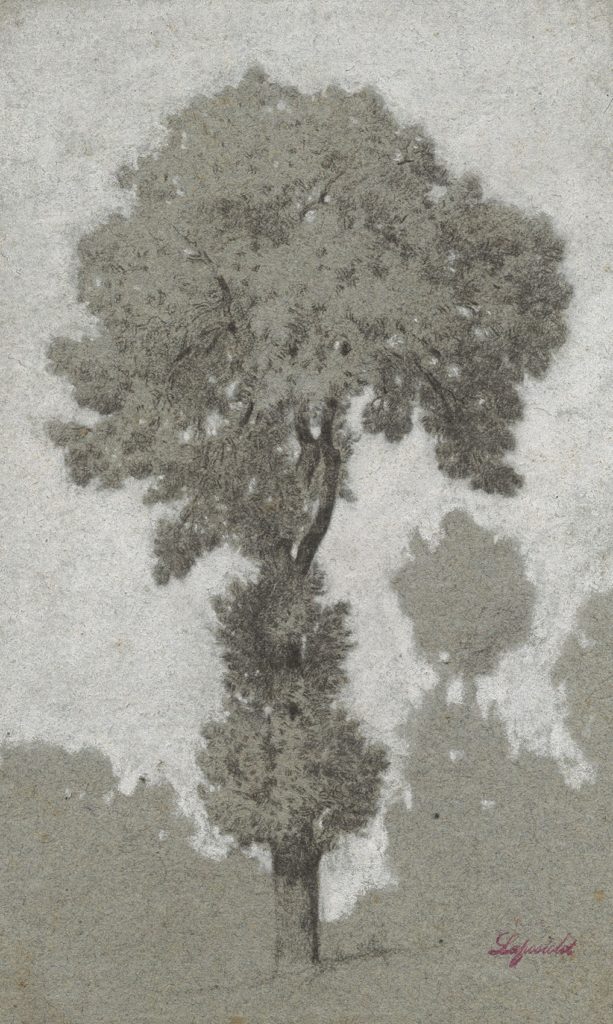L’Arbre
The Tree
Pencil and white highlights on gray paper, ca. 1845-55
Bears the posthumous sale stamp lower right (L. 1661)
Size
370 x 255 mm
Provenance
Private collection, Lyon
Exhibition
A delicate and modern portrait of a tree by Charles Lapostolet. As from the 1810s and during the entire 19th century, the “tree portrait” was an exercise practiced by every student who hoped to become a landscape painter. This new subject was initiated by artists such as Pierre-Henri de Valenciennes who published a landscape treaty. Starting in 1817, the candidates of the “paysage historique” [historic landscape] categorie of the Grand Prix de Rome were required to prove they were able to paint a tree. For this test, named “épreuve de l’arbre” [the tree test], students had to complete from memory a species of tree chosen by the jury. It soon became more than a student exercise, indeed confirmed artists, such as Jean-Baptiste-Camille Corot, Théodore Rousseau or Gustave Courbet, portrayed trees during their career as they considered the tree as a sufficient subject in itself.
Born in 1824, Charles Lapostolet was a graduate of Léon Cogniet, even though the student did not embrace the academism and preferred to work outdoors. From 1848 until 1882, Lapostolet exhibited at the Salon de Paris where he received medals in 1870 as well as 1882. In his initial studies, he first was inspired by his homeland in Burgundy. In later years, the center of his attention evolved from wooded hills towards seascapes. His inspiration came along with his travels through Europe, in France, Italy as well as Holland where he admired the 17th century paintings. Lapostolet had quite a circle of acquaintances, as he was a friend of both Eugène Boudin, whom he met in Honfleur, and Jean-Baptiste Carpeaux, who made twice his portrait, as mentioned in his posthumous sale.
Information is lacking regarding the whereabouts of the completion of this drawing. It should nonetheless be dated around the time of his training under Cogniet, and at the last before he became a seascape painter. The present tree is clearly isolated from the forest which is beautifully left in reserve. A single trunk, with an extensive foliage, is captured for its own reality. The present tree could be an oak, given the overall shape of its foliage and the contorted structures of its main branches. Beautifully preserved, the present drawing illustrates the evolution of the tree portrait in the 19th Century. Previously left in the background of the composition, the tree became a subject of study for Prix de Rome students and finally was seen as a work of art in itself.






